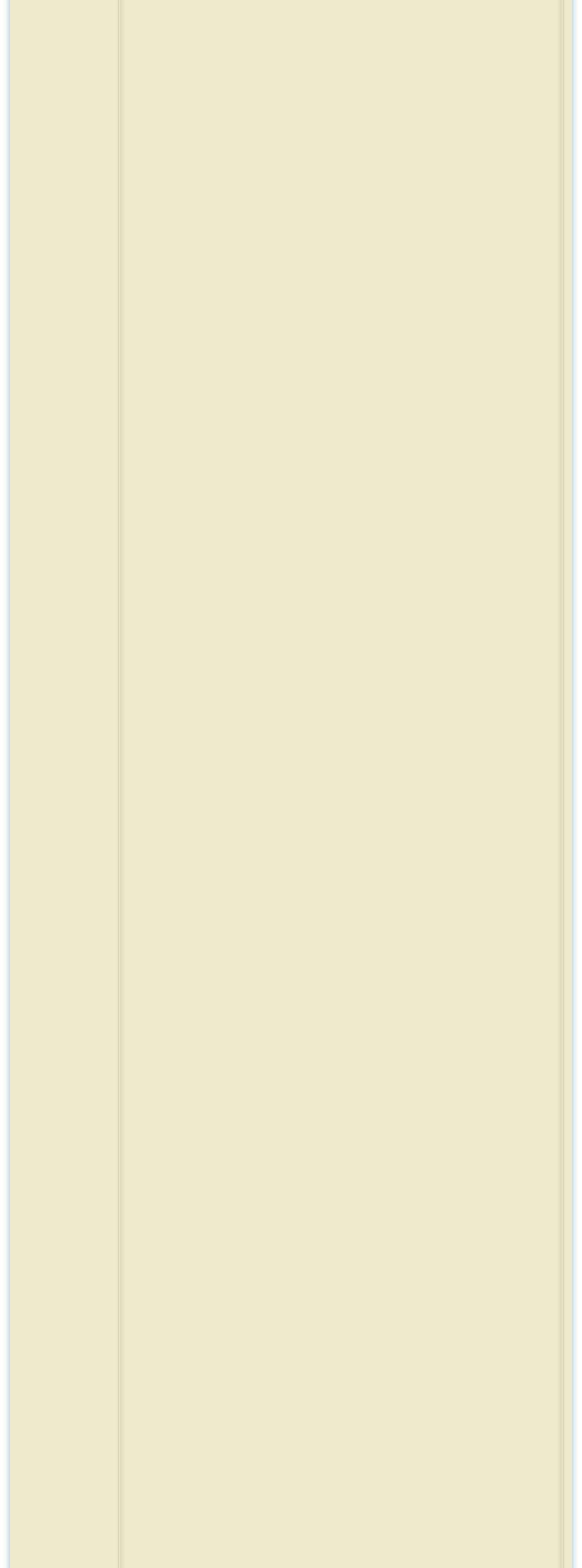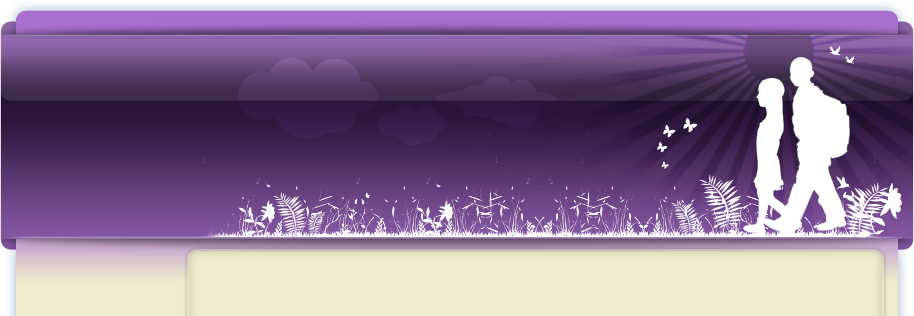


Family Resources
Your Two Year Old
How your child may develop this year
■Two-year-olds enjoy using their senses and motor skills to explore the world and are highly curious about unfamiliar objects, events and phenomena. They can solve simple problems with the "trial and error" method and will practice an activity many times to master it. Children this age also pretend more during play, using familiar objects and situations to process their daily experiences.
■Children this age are laying the groundwork for reading and writing. They enjoy having books read to them and may pretend to "read" as they independently look through familiar books. Two-year-olds can sing the A-B-C song, but they don't yet understand that the letter names correspond to specific graphic designs. They also make a variety of scribble marks anywhere and everywhere and may even attempt to write the first letter of their name.
■As they play and complete their daily routines, two-year-olds learn important math skills. They can use a toy to represent another object, recognize patterns with daily activities and understand concepts of time like, "tomorrow" and "yesterday." Two-year-olds are just beginning to use logical reasoning to solve everyday problems. They can sort shapes, complete puzzles with eight pieces or less and stack a set of rings on a peg by size. They also understand addition and subtraction with the numbers "one" and "two."
■Physically, two-year-olds explore all the ways to travel from here to there, including rolling, crawling, creeping, walking, running, jumping and climbing. They can also kick a small ball forward, catch a rolled ball and throw a ball overhand (but with little accuracy). Two-year-olds love finger play activities (e.g., "The Itsy, Bitsy, Spider"), pounding and squeezing clay, shaking rhythm instruments and scribbling. They can turn doorknobs and unscrew lids and have improved their skills using eating utensils.
■Two-year-olds also use their motor skills to explore the creative arts. They make sounds by banging and shaking instruments and household items. They enjoy dancing upon request, doing finger plays and acting out chants and songs. Children this age are also gaining control over their voices and will join in singing the refrains of their favorite songs. With art, they enjoy the sensory pleasures of the art materials and focus on the process of creating art, rather than the final product.
■Two-year-olds enjoy playing alongside other children, but usually keep to themselves. When conflicts arise, adults need to step in to prevent aggression and teach appropriate behaviors. Children this age are beginning to label feelings that they recognize in themselves and others. Controlling emotions is still difficult, however, so frustration may trigger emotional meltdowns. Comfort objects like blankets or teddy bears help two-year-olds cope with new situations or strong emotions.
Your Three Year Old
How your child may develop this year
■Three-year-olds learn primarily through exploring, using all the senses. While playing, they are better able to ignore distractions and focus on the task at hand. They will even persist in completing something that is a bit difficult and can think more creatively and methodically when solving problems.
■Three-year-olds are also able to listen to and understand conversations, stories, songs and poems. They are learning their letters, but may also refer to numbers as "letters." They notice print in the environment and may ask what it means. They also realize that print in books tells a reader what to say. During the year, scribbles begin to appear more like letters and children may string several of these "letters" together to form mock words. They become aware of the uses for writing and may dictate words for adults to write down.
■Children this age develop their logical reasoning skills as they play. They can put together simple puzzles and understand that a whole object can be separated into parts. They are able to classify and sort objects, but usually by only one characteristic at a time. Three-year-olds identify and describe objects that are the "same" or "different." They can count up to "five," and begin to recognize written numerals "0" through "9." When counting items in a collection, they can now label each object with just one number word to determine the total ("one to one correspondence").
■Physically, three-year-olds are less top-heavy than toddlers and move with greater sureness. They have improved their abilities to run, climb and perform other large-muscle activities. They can ride a tricycle or pump a swing. They can catch a large ball using two hands and their bodies. Improved finger dexterity allows them to put together simple puzzles, use tools, hold crayons with fingers instead of fists, make balls and snakes out of clay and undress without assistance.
■Emotionally, three-year-olds need familiar adults nearby for security as they explore and play. As they develop more independence, children this age begin to have real friendships with other children. When conflicts arise with peers, three-year-olds will typically seek adult assistance. They are learning to recognize the causes of feelings and will give simple help, such as a hug, to those who are upset. Three-year-olds can better manage their emotions, but may still fall apart under stress.
Your Four Year Old
How your child may develop this year
■When it comes to learning, four-year-olds are developing greater self-control and ingenuity. Their pretend play is more complex and imaginative and can be sustained for longer periods. They can also make plans and complete tasks. Four-year-olds want to try new experiences. They also want to be more self-reliant and seek to expand the areas of their lives where they can be independent decision-makers.
■The language skills of four-year-olds expand rapidly. They begin communicating in complex and compound sentences, have very few pronunciation errors and expand their vocabularies daily. They can follow multi-step directions and understand explanations given for things they can see. Four-year-olds frequently initiate conversations and are less likely to change the subject of conversation to areas of personal interest. They are also getting better at sharing personal experiences without prompts from adults.
■Four-year-olds are building their knowledge of written language. They want to know what words in their environment say and can recognize many letters. By the end of this year, many children understand that letters represent the sounds in spoken words and may associate some letters with their sounds. Most children also are capable of writing some legible letters and know that writing goes from left-to-right and top to bottom.
Your Five Year Old
How your child may develop this year
■Five-year-olds are creative and enthusiastic problem solvers. They offer progressively more imaginative ideas for how to do a task, make something or solve longer-term or more abstract challenges. As they participate in a variety of new experiences, five-year-olds ask more analytical questions and weigh their choices. They are also more social as they learn new things and prefer activities that involve other children.
■The language skills of five-year-olds are well developed. They pronounce words clearly, speak in complex and compound sentences, use correct grammar for the most part and have good-sized vocabularies that continue to grow rapidly. Children this age enjoy initiating conversations, can wait their turn to speak during group conversations and are typically able to include appropriate details when sharing personal experiences.
■Five-year-olds begin to extend their oral language skills to reading and writing. They know their uppercase and most lowercase letters and understand that letters represent specific sounds in spoken words. This knowledge helps them to sound out words in print and write out words based on their sounds. They also can discuss stories and are able to tell their own tales.
■The mathematical thinking of children this age becomes more abstract and expands to include a greater understanding of the characteristics of shapes and numbers. They can count out a collection of up to "20" items, conduct simple addition and subtraction and identify which number in a set is larger. Five-year-olds understand and use words related to position, such as "under" or "behind." They sequence events chronologically and are learning to tell time. They can also sort objects based on more than one characteristic.
■Physically, five-year-olds abound with energy and seek active games and environments. Their increased abilities to balance and coordinate movements allow them to ride a bike with training wheels, swim, jump rope and perform most ball-related skills. They show mature form in walking and running and are able to vary the direction, speed and quality of their movements. They can also use their fingers flexibly to control writing and painting tools, dress and undress dolls and manage zippers and buttons.
■Five-year-olds really want to know more about how the world works. Hands-on experiences help them to form theories to explain "how" and "why" things happen. They can use tools like thermometers and scales to gather information and are able to more independently carry out simple investigations. Five-year-olds also use increasingly descriptive language to relay information, ask questions and provide explanations.
Your Six Year Old
How your child may develop this year
■Six-year-olds have longer attention spans and continue to prefer structured activities to more open-ended experiences. They enjoy taking on new roles and responsibilities, but still require much direction from adults and frequently ask questions to ensure that they are completing tasks the right way.
■The language skills of six-year-olds become increasingly sophisticated throughout the year. Their vocabularies rapidly increase, and their language moves beyond communication to provide a foundation for learning, including the development of independent reading skills. In general, their pronunciation of words is clear and they use complex grammatical forms accurately.
■In first grade, children transform into true readers. They apply their knowledge of how print works and practice strategies to decode unfamiliar words. They learn to read aloud with fluency, accuracy and understanding. They read a variety of texts for pleasure (e.g., stories, informational texts, poems) and draw upon a variety of comprehension strategies to understand and enjoy texts. Children this age write stories, notes and descriptions. Most are able to develop an idea beyond a sentence and will add some details to help describe or explain things in their world. They enjoy sharing their writing with others.
■In mathematics, six-year-olds can typically count up to "200" and count backwards from "20." They understand the concept of "odd" and "even" numbers and can represent numbers on a number line or with written words. They use increasingly more sophisticated strategies to solve addition and subtraction problems. They also count the sides of shapes to identify them and can combine shapes to create a new one. Six-year-olds can also give and follow directions for moving around a room or on a map.
■Scientific discovery for children this age is affected by their tendency to straddle the world between make-believe and reality. Six-year-olds might continue to give animals human characteristics, such as suggesting what a worm might be thinking, or that a butterfly has eye lashes. Gentle encouragement to look closely at worms and butterflies will help children to describe more objectively what they observe. Science experiences for this age group should continue to immerse children in first-hand investigation of the world around them, so they can continue to build a reservoir of experiences from which they can begin to draw as their thinking becomes more sophisticated.
